Blood clots are a serious health problem, any medical or health expert will tell you that. Also known as a thrombi, blood clots can cut off blood flow, travel throughout the body, and cause the potential cut-off of vital blood and oxygen to crucial organs, such as the heart, lungs, or even brain. The result of this can be fatal, and it can happen incredibly quickly. Generally, before it gets to that point, the body will send you warning signs of a blood clot. If you know what to pay attention for, you can seek help before it is too late.
What is Deep Vein Thrombosis?
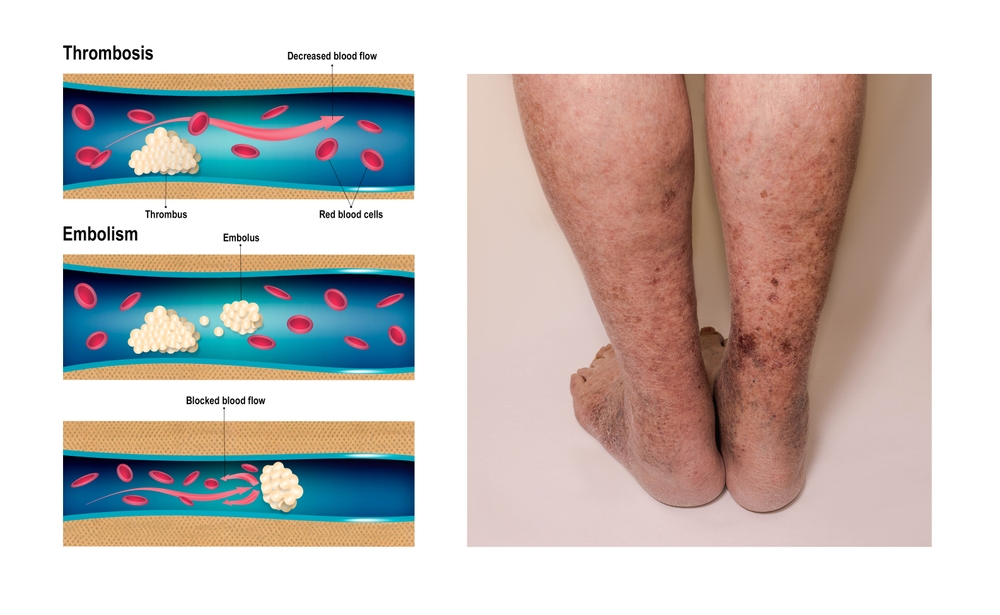
Deep vein thrombosis (DVT) is a condition characterized by the formation of a blood clot in a deep vein within the body. Most often, these thrombi, aka blood clots, form in the lower leg or thigh. If left untreated, DVT can lead to some pretty major complications. These include pulmonary embolism, which is a life-threatening condition where a blood clot breaks loose and travels to the lungs. They can also block the normal flow of blood to the heart and even the brain. The results, as already stated, can be fatal.
Blood Clot Warning Signs and Symptoms

While sometimes these blood clots can form without much warning, the body does send us signals that they are there before the problem becomes a much bigger one. DVT can manifest with various signs and symptoms, including:
Read More: Understanding the Link Between Your Blood Type and Health
Swelling

This swelling will usually take place in the leg where the blood clot has formed. It may be subtle, but for no other apparent reason, one leg will be slightly swollen and therefore bigger than the other. This could be a sign of some other kind of trauma to the leg, but it is important to have this checked out by a doctor.
Pain or tenderness
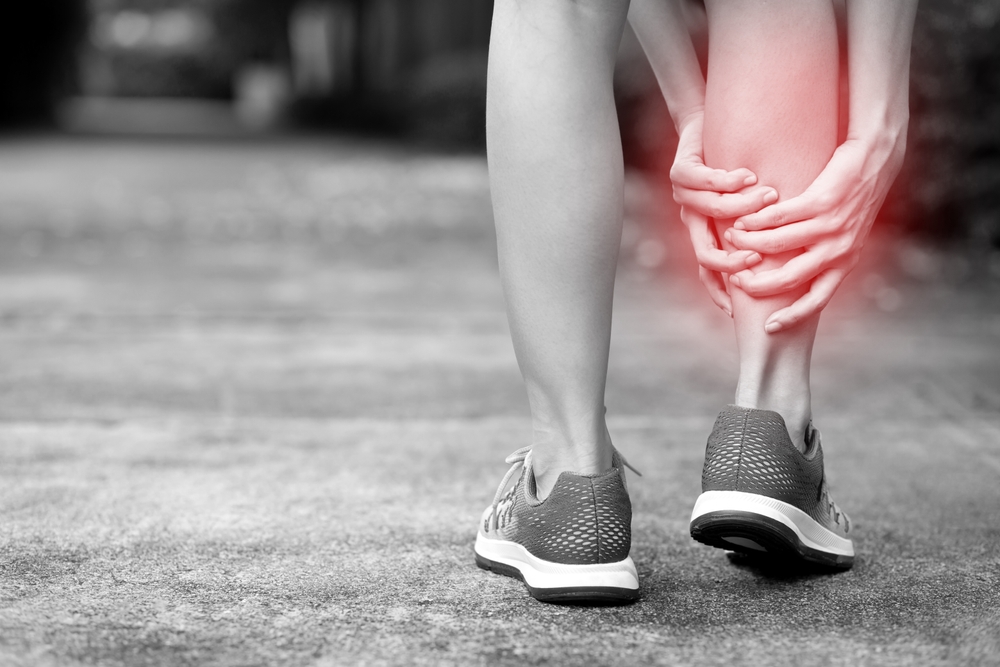
If you have an unexplained cramp or charley horse, this could be a sign of a blood clot. These cramps most commonly occur in the calf muscles. Again, this could be the sign of something else, however, it shouldn’t necessarily be ignored, either.
Cramping, aching, or increased warmth

Around the area affected by the blood clot, you may notice pain that is achy or that feels kind of like a cramp. This area will also likely feel warm to the touch, warmer than the rest of your leg. If you notice this, go see your doctor right away.
Red or discolored skin
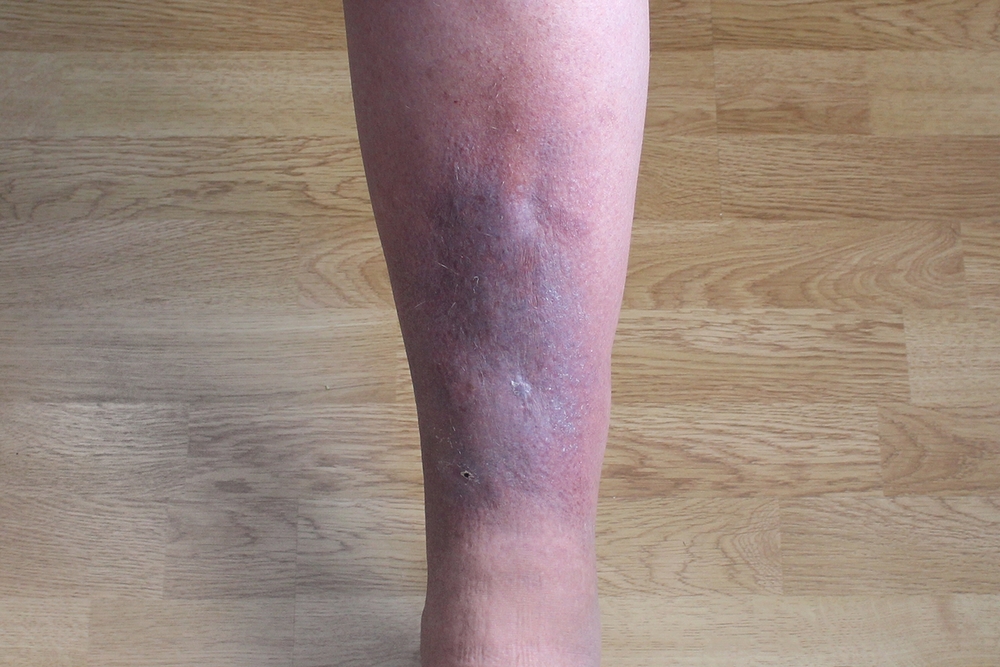
The skin over the affected vein may appear reddish or have a bluish tint. This is because the clot is affecting circulation in this area. Don’t ignore this as just a bruise, especially if you have some of these other symptoms.
Read More: Study Finds People with Certain Blood Type Are Prone to Early Stroke
Thickening or firmness
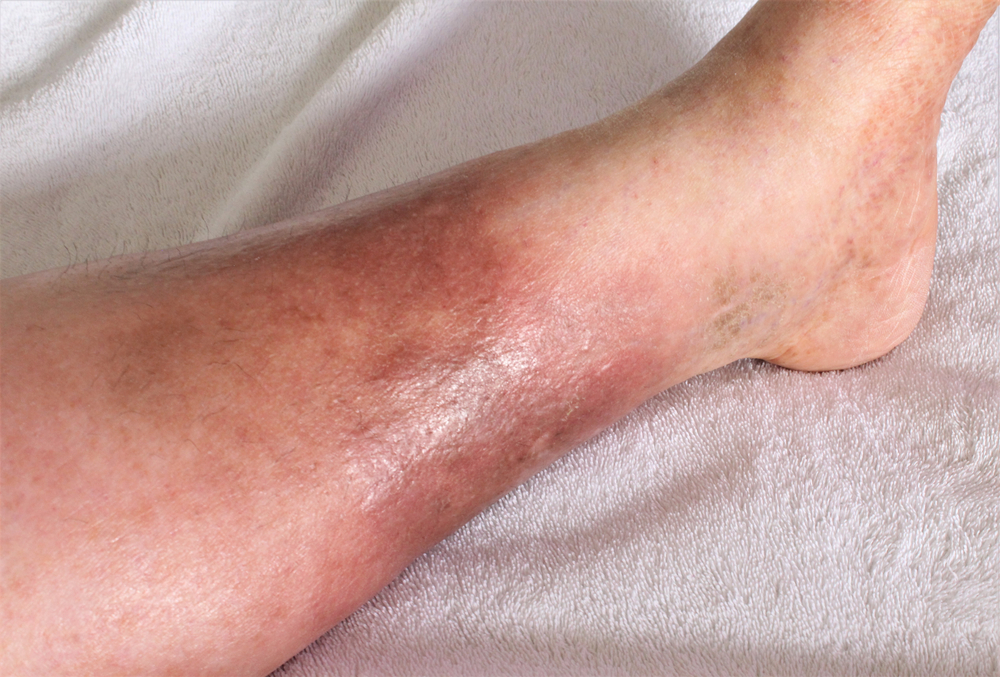
The vein may feel hardened or lumpy to the touch. This is because the clot or clots are clogging up the vein. This is incredibly dangerous and should be seen by a doctor as soon as possible.
What to Do If You Suspect a Blood Clot
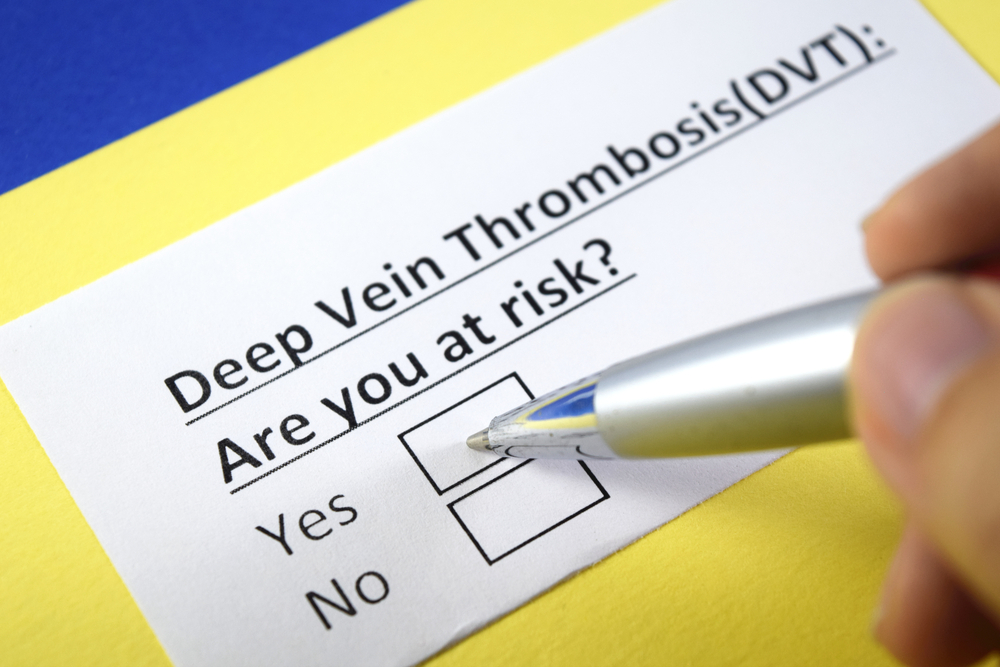
Blood clots are serious, and if you have any of the symptoms mentioned above, it is not a bad idea to have them checked out by a doctor. Even if you are a healthy, active person, these things can still happen. That being said, there are a few risk factors that you should be aware of so that you can be extra vigilant. If you are overweight or obese, have other risk factors such as cardiovascular disease, lead a sedentary lifestyle, are a smoker and/or drinker, you are at a higher risk of developing blood clots. If you have recently experienced prolonged immobility, had a recent surgery, or have a family history of blood clots, these blood clot warning signs should ring extra alarm bells in your head. Even things like long flights or frequent flying can increase your risk. A healthcare provider can perform diagnostic tests such as ultrasound imaging or blood tests to confirm the presence of a blood clot. From there, they can assess the urgency and the treatment plan.
Preventing Deep Vein Thrombosis

While some risk factors are out of your control, the reality is that you can actually manage your risk of thrombosis via lifestyle habits. To reduce the risk of developing DVT, consider the following preventative measures:
- Stay physically active: Regular exercise helps improve blood circulation and prevents blood clots from forming. This should be a mixture of cardiovascular, strength, and mobility training.
- Avoid prolonged immobility: If sitting for long periods, make an effort to move or stretch your legs regularly. Get up every 30 minutes to an hour and stretch or walk while at work. Make sure you get up and walk every hour or so on long flights, and consider wearing compression socks while flying.
- Perform leg exercises: Simple exercises like ankle pumps or leg lifts can promote healthy blood flow. You can easily do this seated at your desk, on a plane, during a road trip, and the list goes on.
- Wear loose-fitting clothes: Tight clothing can restrict blood flow, so opt for loose-fitting garments whenever possible. This does not refer to compression socks, which are designed specifically to promote circulation and blood flow.
Diagnosing and Treating DVT
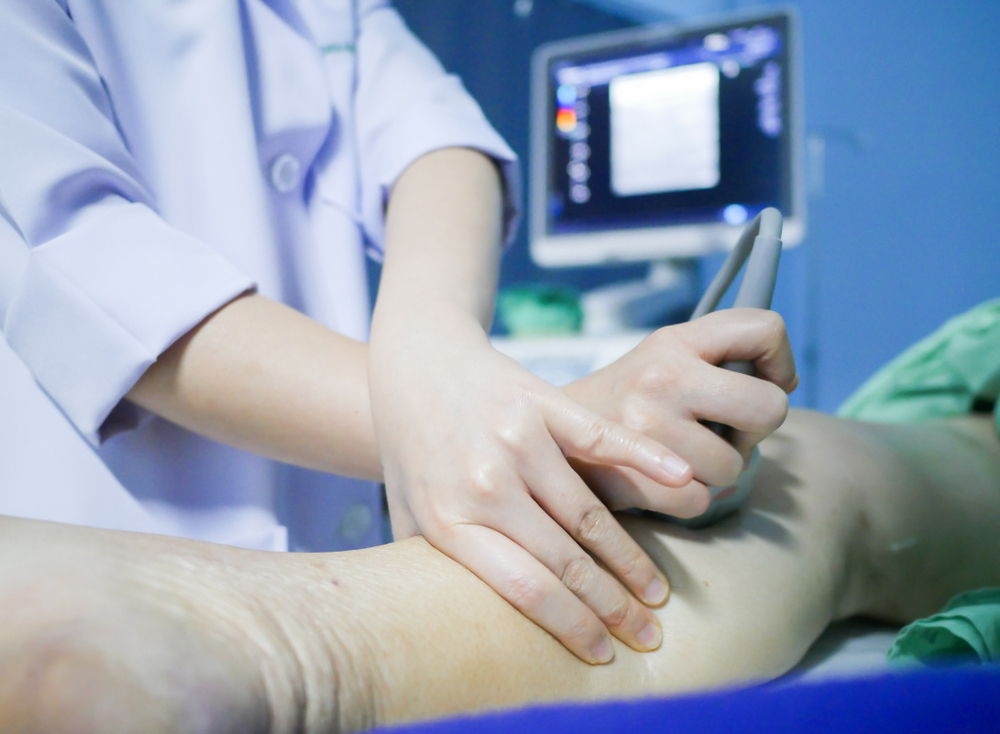
Healthcare providers will use a combination of physical examinations and diagnostic tests to accurately diagnose DVT. Treatment can involve blood-thinning medications to prevent the clot from getting larger or breaking loose. In severe cases, procedures like catheter-assisted thrombus removal may be necessary to address the clot directly. Beyond that, they will likely ask you questions about your lifestyle and suggest diet and activity changes so that you can decrease the risk of another blood clot forming in the future.
The Bottom Line

Deep vein thrombosis is a serious medical condition that requires immediate attention and treatment. If you are aware of the blood clot warning signs, you will be better able to recognize that something is wrong before it becomes a life-threatening problem. Adopting preventative lifestyle habits and seeking medical attention promptly if you suspect a blood clot will also greatly reduce your risk of complications. Though not everything about blood clot formation is within your control, much of it is, so take action now to protect your health and life.
Read More: What Does a Blood Clot Feel Like? Experts Share Common Signs and Symptoms

